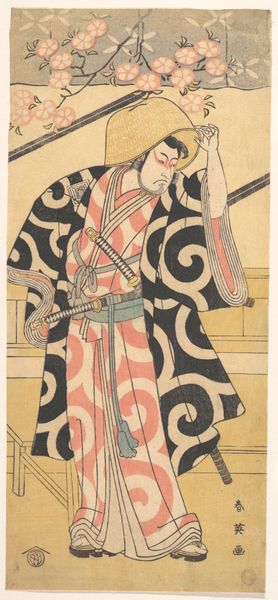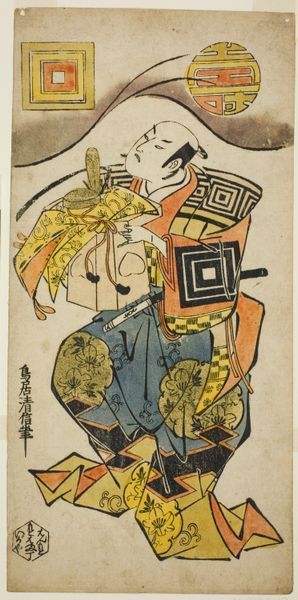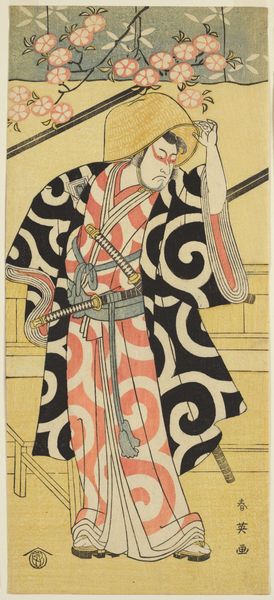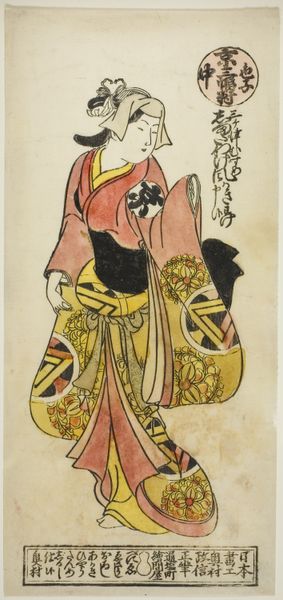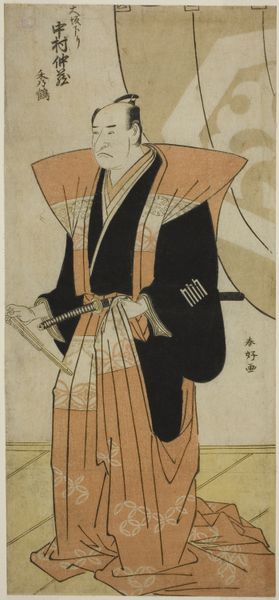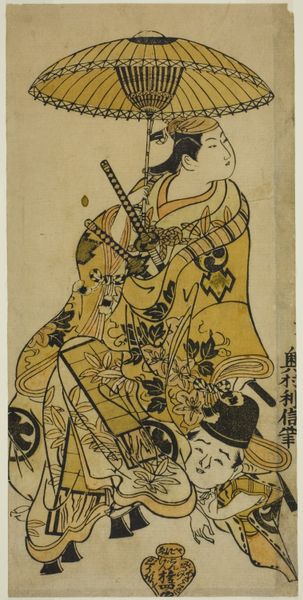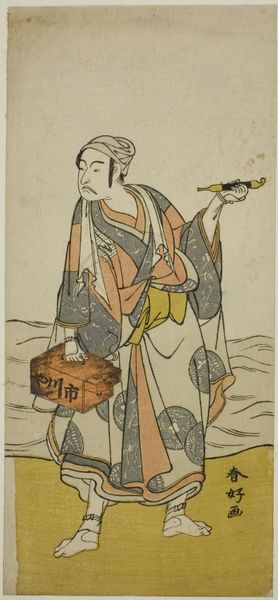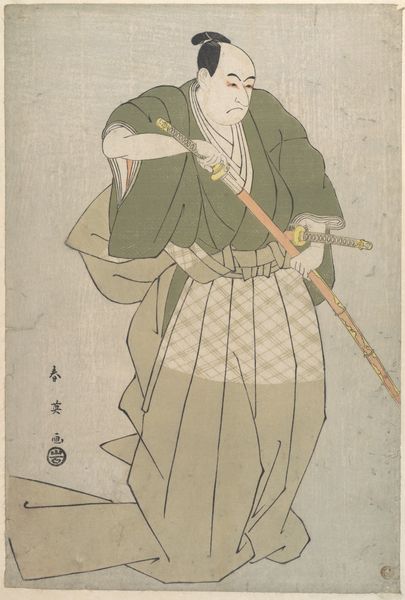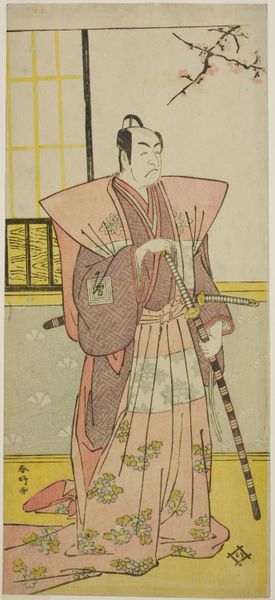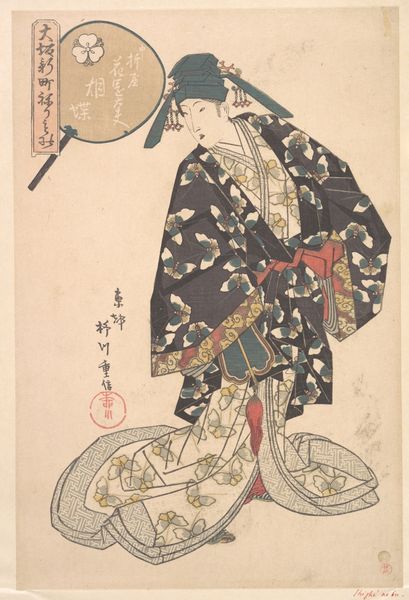
The Actor Sakata Hangoro III as Omi no Kotoda in the Play Haru no Nishiki Date-zome Soga, Performed at the Nakamura Theater in the Second Month, 1790 c. 1790
0:00
0:00
#
portrait
# print
#
caricature
#
asian-art
#
caricature
#
ukiyo-e
Dimensions: 31.7 × 14.7 cm (12 1/2 × 5 13/16 in.)
Copyright: Public Domain
Curator: This striking woodblock print by Katsukawa Shunkō, dating from about 1790, captures the actor Sakata Hangorō III in the role of Omi no Kotoda. The performance was at the Nakamura Theater. What do you make of it at first glance? Editor: My first impression is one of tension. There’s an undeniable sense of coiled energy radiating from the actor's pose and intense gaze, despite the stillness of the medium. His face suggests a sort of defiant scowl that just commands attention. Curator: It is interesting to consider the role of printmaking in Edo-period Japan. These prints, mass-produced, brought theatrical performances to a much wider audience beyond those who could attend the actual shows. We're talking about a significant shift in how entertainment and cultural narratives were consumed. Editor: Absolutely, and it highlights the accessibility of art and culture for the merchant class. Ukiyo-e prints, including this one, served as both advertisement and commodity. They depicted not just the actors but the fashionable world they inhabited. Thinking about identity and performance – it's all so consciously constructed, so theatrical. We can ask how class anxieties might surface here? Curator: Note how the artist meticulously depicts the patterns of the costume and the layered fabrics. This wasn't just about portraying a famous actor; it was about showcasing the skill and artistry of the artisans involved in creating these elaborate stage garments. Consider the role of the publishers, the carvers, and printers, each contributing to the final product that then entered circulation. The materials themselves, the paper, the inks – each component has its own history. Editor: True, but isn't that focus on material at the risk of sidestepping the bigger questions about how these images circulated, about whose gaze they catered to, and how they reinforced existing social hierarchies? This actor is playing a role and already mediating one persona inside of another one: It calls attention to its artifice! Curator: I see your point, and it reminds us that examining the production does not exist in a vacuum. What do we know about print circulation among genders? Perhaps both the artistic process and its consumption should both be considered. Editor: Yes, to think critically about what narratives were being consumed and by whom is crucial. The material conditions, interwoven as they are with societal frameworks, illuminate a deeper picture of power, representation, and reception in Edo-period culture. I see the print’s production complexities as interconnected with those social concerns and think each approach really highlights the artwork's significance. Curator: Agreed, they truly offer very diverse angles. Editor: Absolutely! Thanks.
Comments
No comments
Be the first to comment and join the conversation on the ultimate creative platform.
